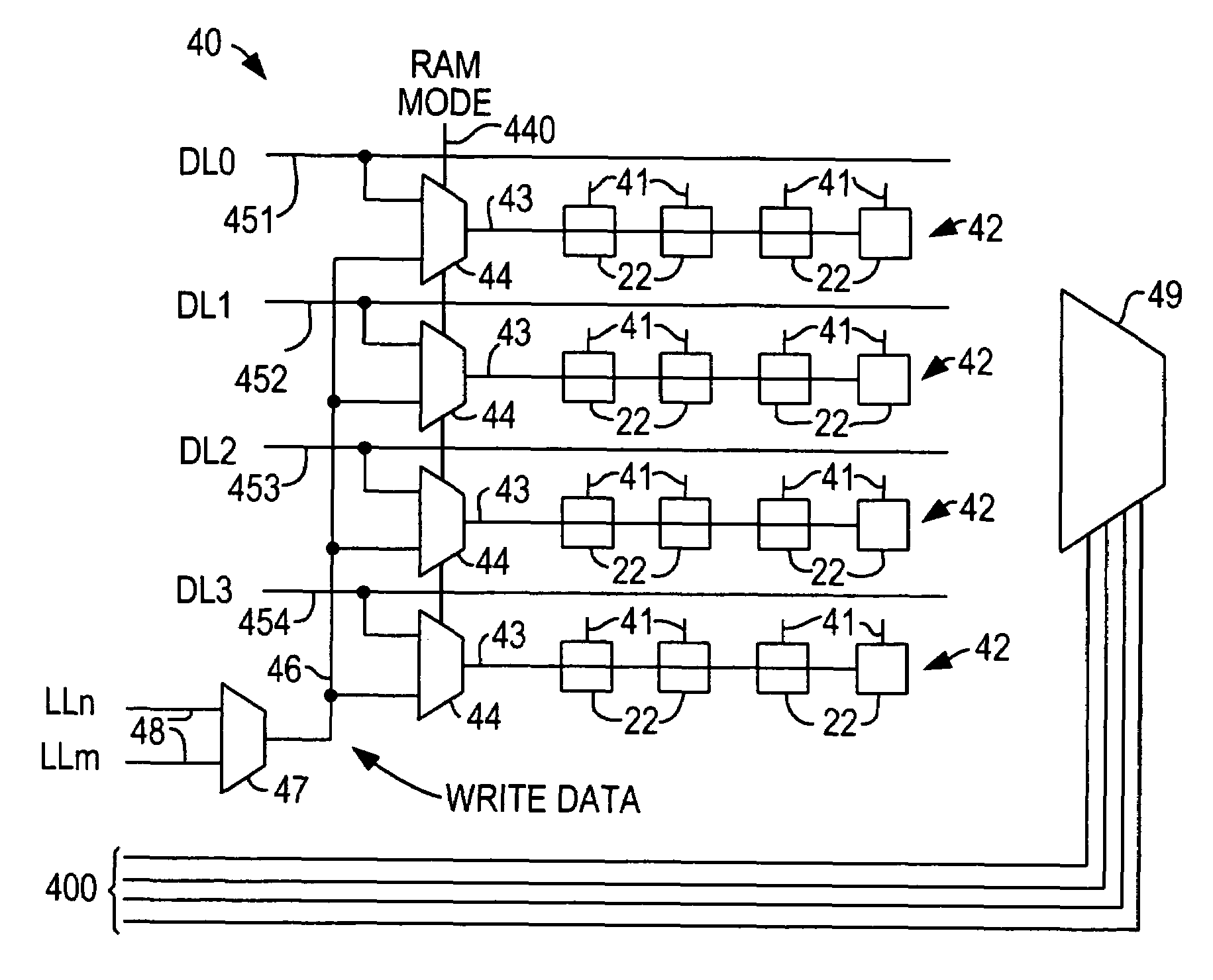Distributed random access memory in a programmable logic device
a random access memory and programmable logic technology, applied in the direction of computation using denominational number representation, pulse technique, instruments, etc., can solve the problems of increasing the number of logic elements that can be made available, limiting user flexibility, and increasing the cost. cost
- Summary
- Abstract
- Description
- Claims
- Application Information
AI Technical Summary
Benefits of technology
Problems solved by technology
Method used
Image
Examples
Embodiment Construction
[0038]The invention will now be described with reference to FIGS. 1–26.
[0039]FIG. 1 shows a representation of a PLD 10 that may incorporate the invention. PLD 10 includes a plurality of logic cells or elements (LEs) 11, arranged in groups or “logic array blocks (LABs)”12, interconnected by routing shown generally at 13. Routing, shown schematically at 14 also exists inside LABs 12 to interconnect LEs 11. As described above, each LE 11 includes a plurality of RAM bits used for configuration. A typical LE may be configured as a four-input look-up table, having sixteen configuration bits. Input / output regions 15 preferably are located adjacent the edges of PLD 10.
[0040]PLD 10 may optionally include blocks of RAM (not shown). Whether or not such blocks are present, it may be desirable to use some or all of the configuration bits as distributed user RAM (or read-only memory (ROM)). A typical LE normally already includes the necessary circuitry for reading as distributed RAM. For example,...
PUM
 Login to View More
Login to View More Abstract
Description
Claims
Application Information
 Login to View More
Login to View More - R&D
- Intellectual Property
- Life Sciences
- Materials
- Tech Scout
- Unparalleled Data Quality
- Higher Quality Content
- 60% Fewer Hallucinations
Browse by: Latest US Patents, China's latest patents, Technical Efficacy Thesaurus, Application Domain, Technology Topic, Popular Technical Reports.
© 2025 PatSnap. All rights reserved.Legal|Privacy policy|Modern Slavery Act Transparency Statement|Sitemap|About US| Contact US: help@patsnap.com



